If you have ever bought a handgun … or you ever intend to buy one for self defense … this might be the most important article you ever read.
Here’s why …
Because in today’s message we’re going to talk about how and why you should “test” a (new to you) handgun before carrying it or otherwise trusting your life to it for self-defense.
This is especially important because I just picked up two new Glocks that I’m in the process of testing right now before I carry them for self-defense.
Most gun owners don’t do this (I admit that I never gave it a thought in the past). They buy a gun, maybe run a box or two of ammo through it then say “it’s been 100% reliable!”
Or they think that “only” one malfunction per box of ammo is “reliable” … it’s not.
In short, if you have a gun that you’re going to use for self-defense, do NOT trust it until you test it …
Why and when should you test a gun for reliability?
Whenever you get a new gun for self-defense you need to test it. If you pick a well-known “brand” gun from proven companies such as Glock, Smith & Wesson, HK, or Sig Sauer, you might think that you will never have to worry about reliability.
You would be wrong.
While you are making a smart choice by choosing brands and guns that have been chosen by, literally, hundreds of thousands of police, military and others that rely on their gear every day … we’re still talking about mechanical devices that can fail.
You could have also gotten a “lemon” from the factory. During the last gun class I took, one of the girls on the line had the entire slide move forward off the frame of her Gen 4 Glock 19. The gun was practically brand new and the Glock slide lock spring (the thing that holds the slide on the gun, that you have to depress to field strip it) had broke.
You can never tell with these things. What is telling though is that she explained it had happened before. That leads me to believe that if the gun was tested prior to “duty” use — a problem like that would have shown itself early on.
It’s also important to mention that if you do any “custom” work to your gun or make changes to it mechanically, treat it like a new gun and test it again …
What is reliable?
When it comes to reliability and measuring it in your gun, there’s really two things we’re talking about:
1. Reliable enough to “trust” it to carry it
2. Reliable long-term …
For the purposes of our discussion, we’re talking about how to test your (new to you) gun so that you trust it for self-defense. That means your concealed carry, duty or home defense gun.
Essentially, you have to put hundreds of rounds through that gun with no malfunctions before you trust it. This also means that you should put both cheaper “practice” ammo (FMJ – full metal jacket) and the JHP (jacketed hollow point) self-defense ammo you’ve chosen to make sure there’s no compatibility issues (because some guns can reliably feed nose tipped full metal jacket bullets but will hiccup on some types of hollow points).
So how many rounds is enough before you can “trust” a gun?
How 3 experts test their guns for reliability …
First, Jason Hanson will explain his testing protocol for any new gun. He also explains that when he picks up his gun from the gunsmith or after doing any work on his guns, he puts them through the same testing routine …
“So here’s the simple test I do when I get a new gun and the one I’ll do when I get my 1911 from the gunsmith this week.
“First, I simply look the gun over. I look it over for any cracks, any sharp edges or anything that would immediately scream “this gun has problems.” If I don’t see any problems then I go to the range and put about 200 rounds of full metal jacket ammo through the gun. I make sure the gun cycles properly and that there aren’t any problems. I also make sure that the sights are properly aligned and they don’t need any adjustment.
“In addition, I also perform several reloads to make sure the magazines drop free and don’t stick, and that there aren’t any other problems I discover with the magazines.
“If the gun works shooting the cheap ammunition then I introduce my jacketed hollow point ammo. I’ll shoot between 100-200 rounds to make sure my gun feeds this properly. I know that jacketed hollow point ammo isn’t cheap, but I really wouldn’t shoot less than 100 rounds when testing out a new gun.
“After I’ve put about 400 rounds of ammunition through the gun I’ll take it home and clean it and look it over once again while the gun is apart. After I’ve done all this, then I’ll be comfortable enough to put the gun on my hip and start carrying it concealed. You may feel comfortable doing less or you may want to do more of a test, but whatever you do, don’t bet your life on a gun without first making sure it works.”
So Jason puts a minimum of 200 rounds of FMJ training ammo and a minimum of 100 rounds of self-defense JHP ammo–preferring 200 rounds of self-defense ammo (around 400 total rounds, a mix of FMJ and JHP ammo).
Next, let’s hear what Firearms instructor Todd Green says. Todd is a notable source when it comes to “reliability” because he has, quite literally, done, more handgun testing than anyone I have ever heard of.
Over a number of years, he chose one handgun to do a 50,000+ round “endurance test” with and record the results. This includes 62,333 rounds through an M&P 9mm, 91,322 rounds through an HK P30, 50,000 rounds through an HK45, 71,260 rounds through a Gen 4 Glock 17, and 64,579 rounds through a Springfield/Warren custom 9mm 1911 …
So when Todd talks about reliablity, I listen and you should too. This is what he has to say …
“For me to be comfortable carrying a new gun, it needs to shoot at least200 rounds of the same JHP defensive ammo that I’ll carry when CCW’ing without a single stoppage. Ordinarily, I’ll put at least 500 rounds of practice ammunition through the gun first… mostly so as not to waste the more expensive JHP ammo on a gun that might be having a problem. If the gun cannot make it through that 500rd of FMJ-style ammunition, I’ll examine it and attempt to fix anything either by working on it myself or returning the gun to the manufacturer. Then I’ll start the cycle over again, 500rd of FMJ followed by 200rd of JHP, minimum.”
“I’ve made exceptions in the past to the 500rd “warm up” before shooting the carry ammo, usually for backup guns like my S&W 442 j-frame or my Ruger LCP pocket gun. They still get 200 rounds of JHP, though. Yes, it’s expensive. But because I test the ammo during my normal shooting routine, it’s really just the difference in price between practice ammo and the JHP. Over the long run, I’d rather have confidence in my pistol’s reliability than a few extra shekels in my pocket.”
So Todd’s standard is at least 200 rounds of JHP self-defense ammo, along with at least 500 rounds of FMJ “practice” ammo before that. Putting the round count around 700 (although he admits the smaller pocket and backup guns he uses sometimes only get the JHP test).
And he also makes a good point about a gun having to re-earn your trust if it ever malfunctions, “Finally, I have one more personal rule when it comes to reliability: I won’t carry a gun if it’s had a stoppage within the last 200 rounds. So if I’m at the range and the gun fumbles, either I put at least 200 more rounds through it without a problem or I carry my backup gun on the way home. Because even if it’s a one in a million fluke, I want to be sure the gun hasn’t developed a breakage or other systemic problem that could go unnoticed.”
And that brings us to Doctor Gary Roberts, the terminal ballistics expert I’ve quoted often in these pages who gives this simple recommendation:
“… make sure you fire at least 500 and preferably 1000 failure free shots through your pistol prior to carrying it. If your pistol cannot fire at least 1000 consecutive shots without a malfunction, something is wrong and it is not suitable for duty/self-defense use.”
What I’m doing right now to test two new Glocks …
This article is timely for me because I’ve just purchased two new Glocks and right now I’m testing them before I start carrying them …
(I won’t reveal which Glocks they are yet … but the results have been interesting so far.)
Because I hate the stock, plastic Glock sights so much, I’ve also already replaced both with aftermarket “night sights” that I prefer, so that is also a part of my “function testing”.
At this time in my life, I typically fire around 200 rounds per range trip because I’m very busy and I simply can’t afford to spend that much time at the range. If I pre-load a dozen magazines before I go and choose a time when other people are not likely to be at the range (conversations waste time), I can get in a good practice, 200 rounds give or take, in less than an hour.
So basically the past couple of weeks, I’ve only run a few drills with my everyday carry Glock 19. The rest of the time I’ve roughly split between the two new Glocks.
Basically, I’ve been shooting them at different distances and recording the results, and how many rounds I’m shooting to see how they differ from my current gun. I’ve also been checking the point-of-aim (POA) verses point-of-impact (POI) with the new sights that I’ve installed on them.
I plan to put at least 500 rounds of FMJ through each of them and at least 100 rounds of the JHP ammo I’ll be carrying for self defense, if not 200 (currently Speer Gold Dot 124gr).
In summary, you need to test your guns …
The bottom line is that you should not be stupid like I used to be and just grab a gun and go.
That would be kind of like buying a new car and immediately taking it on a cross country road trip without checking the tires, the gas, or even looking the car over or “test driving” it.
Again, guns are mechanical devices and they fail. Additionally, with gun manufacturers turning out, literally, millions of these devices — even a 1% margin of error could mean a LOT of bad guns out there (think about it).
You never know if you can trust a gun until it’s proven itself to you. It may take a couple range trips for some people to fire 400 rounds or more … and a couple extra cents to test the self-defense ammo you’ll be carrying … but it’s worth it if you discover something that could save your life or the life of a loved one during your test.


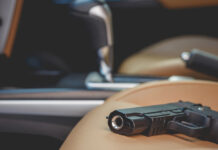




![Are Compensators Worth It? [Video]](https://preparedgunowners.com/wp-content/uploads/2025/07/Depositphotos_815431992_S-218x150.jpg)





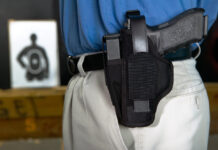
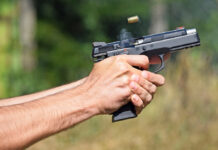
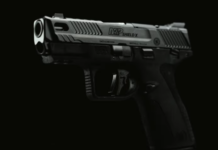
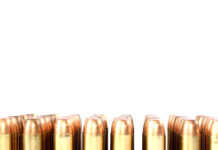
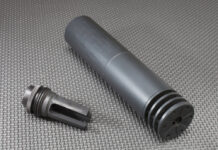
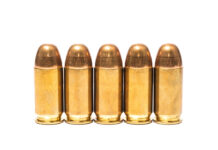


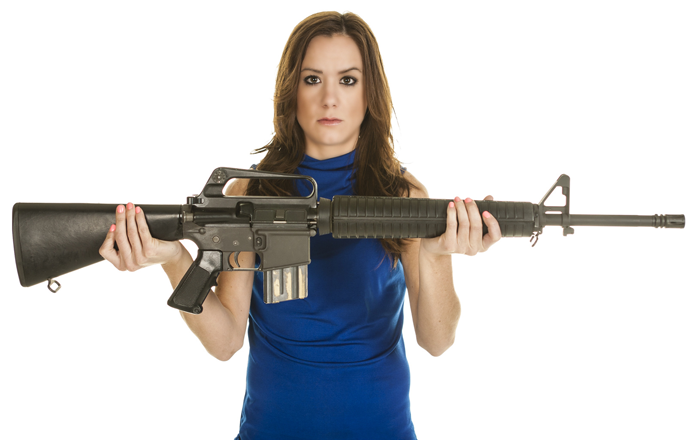








![Optic Ready vs Milled slides? [Video]](https://preparedgunowners.com/wp-content/uploads/2024/02/image-3-100x70.png)
![[Checklist] What Gear You Need To Take Pistol, Rifle & Shotgun Training Courses [Video]](https://preparedgunowners.com/wp-content/uploads/2023/07/Depositphotos_275087632_L-100x70.jpg)
![What is in Carter’s 2023 EDC? [Video]](https://preparedgunowners.com/wp-content/uploads/2023/07/Depositphotos_146856137_L-100x70.jpg)



Glocks ??
Would you carry a 1911 Colt 45 single action semi-automatic with a round in the chamber the hammer cocked and the safety off ? I dought it !
But a Glock with a round in the chamber, Which means what passes for a hammer is cocked and if you touch the trigger and that automatically turns off what Glock and apparently all Glock owners consider to be a safety it fires ! it is the same as carrying the Colt 45 I described above, Why do you consider this safe at all ?
I’ve been carrying my 1911 Kimberly .45acp for YEARS, and WHY would you carry ANY firearm in less than “condition one”? Might as well just carry around a 2 pound brick! Close to the same weight, and usefulness!
However, if you’re uncomfortable enough carrying a firearm around, in “condition one” then go right ahead with doing what you’ve been doing.
The secret to carrying a 1911, a Glock (model 19 for light days) is to not be taking it out of the holster every few minutes, to either admire it, show it off, or whatever excuse you find for fiddling with it, and definitely ALWAYS KEEP YOUR FINGER AWAY FROM THE TRIGGER (& out of the trigger guard) UNTIL YOU’RE READY TO FIRE!
Some people have probably not been properly trained, or they’re just always be incapable of ever safely carrying a firearm.
Um, last time I checked, the Glock “Safe Action” mechanism is DAO – Double Action Only.
The reason the Glock trigger feels like it has so much “creep” in it is simple – it does. The first part of the trigger stroke is spent in pulling back the striker, then the scear trips and releases the striker (my apologies if I’m getting the names of the parts wrong – I had a G19, and traded it for another M1911A1 some 25 years ago. Never could get used to the feel of a fistful of plastic, and I’ve no real love for the 9x19mm round…)
Once the striker is released and the round is fired, the striker returns to its “neutral” position (the striker tip should be just below the breechface,) the action cycles, the brass case is extracted and ejected, the next round is stripped from the magazine and loaded. THE STRIKER REMAINS IN ITS NEUTRAL POSITION.
The striker doesn’t move until the trigger is pulled back again – which pulls the striker back against the force of the firing spring, until the scear releases the striker from the catch on the trigger mechanism that pulls it back, and the cycle is repeated.
As I recall, the Glock 18 essentially used a similar fire control mechanism, with the removal of the disconnector and holding the trigger back allowed the trigger linkage internals to pull the striker back as the slide went forward and the scear to release it as the slide returned to battery. (Cyclic rate 1,100-1,200rpm, or ~2rps. This is why there is a 33-round stick magazine that fits the G17 and G19 – the G18 is based on the G17 pistol, with /some/ parts commonality, but some critical changes in the the fire control group and some dimensional changes in the slide-to-frame fitment – to prevent cross-fitting of the parts and “accidental conversions.”)
So, when the trigger is at rest – on /any/ Glock pistol – the striker is in its neutral position, and is sitting about 0.050″ from the primer. Unless you’re going to whack the thing with a reasonably-sized carpenter’s hammer, that round is just NOT going to be fired – that’s the whole idea of the Double-Action Only firing system.
In terms of action systems, the Glock system is probably one of the safest setups you’re likely to find – anywhere. I approve of the action and of the finish on metal parts, I also approve of the hammer-forged polygonal rifling. I just didn’t approve of the ergonomics (it didn’t feel like a good fit to my paws – and I couldn’t install left-handed controls,) and I couldn’t get used to the polymer frame (didn’t matter how solid the polymer was – I just didn’t like the way it felt.) Also, I don’t like having to pick certain magazines in order to not have to pull them out with a block-and-tackle and a chainfall – if I’m in a firefight, I don’t need to be fighting with my sidearm to reload it as well…
the shooter must be a millionare to do all that shooting/testing or he gets free ammo from the makers
Yeah I believe he gets a deal on the ammo 🙂
Ammo can and will make a difference. My Bersa 9mm CC would not chamber an Italian brand FMJ – bullet ogives too fat near the front -would bounce on feed ramp and jam at 45 degree angle. Win white box cartridges with slimmer bullet taper function flawlessly – as would practically any other with acceptable bullet profile. Am certain, in fact, that Italian ammo will function correctly in any number of other guns. No probs whatsoever associated with Bersa mags – they’re excellent. This pistol is accurate! Off the bag at 15 paces will plop bullets into 1″ – 1 1/2″groups no problem! Just another thing to consider when doing check through of prospective pistol.
Yes to the test! You would be surprised by what some mfgs. consider reliable! When I bought my CM9 (new), even after a 400 round break-in it was still jamming 1 to2 times throughout every 100 round box of FMJ. I called Kahr for support and they told me that they would not authorize a warranty return, because they considered this to be an acceptable rate of failure! They went on to say that they didn’t consider a firearm to have a mechanical problem unless it was experiencing a failure rate of over 30%! Really!? I had to troubleshoot the problem on my own. After taking just over .010” off of the inside of the slide release, the problem went away. It has since fired over 1,000 rounds without a failure.
Hello,
What type of malfunctions were you having with your Kahr ? When you say inside of slide release … do you mean between the release and slide ? Thanks
Steve
These people must make way more than I do. My ammo budget per trip to the range is about $50.00 per trip. And only get about 3 or 4 trips to the range in a year due to having a full time job and a family. But I still feel better carrying than being without.
Ron: good for you for doing what you CAN do instead of not taking action …
Agreed! I put about 750 through a new carry gun w/o incident, and when I shot a two-handed-league (only 20 rounds, and three re-loads) it failed to extract three times (twice on last mag). The extractor had loosened (or not been tightened after last cleaning, but I, of course, doubt I made such a foolish mistake). It was amazing to me at that time, that my flawless functioning carry gun could go so bad so quickly. It pays to heed this article, even after “merely cleaning.’
It never ceases to amaze me how folks will say: “This gun does everything as well as a 1911 except….!” You can argue all you want with me but I’m 72 years old and have been shooting regularly, (and consistently) for all the years since I was 14.
I carry a .45 M-1911A1. Period! It holds 8 rounds, 9 with some magazines, and if you can’t win a gunfight against a single adversary with that many rounds you need a WHOLE lot of practice! Besides, with a quick magazine change you’re fully reloaded and ready for the next event.
9 mm’s are nice, so are .357 Mags, .38+P’s, .41’s, .44 special and magnum, even .50’s, but the .45’s will reliably and accurately hit the thing you are upset with and at least knock it down. If it tries to get up, it is a lot more stationary than it was when we started!
Don’t get me started on “smaller statured personnel” not being able to handle a .45. With proper training anyone can handle a .45 accurately. I’ve trained hundreds of ladies, girls, boys, as well as adult males who thought they were “born able to shoot” and all eventually could shoot the .45 quite reliably.
I realize this particular article is addressing functional reliability, but it just irks me to see anyone say the .45 M-1911A1 is “comparable” to other guns. It served our nation well for over 80 years, and me personally over 58 years, so I save a lot of money on guns and ammo!
Don’t get the idea that “If you ain’t tried it, don’t knock it” applies here, it doesn’t. I’ve shot everything that goes bang and still prefer my trusty “ol’ slabsides”.
If you like a different caliber, use it; but don’t knock the .45 until you really learn how to use it.
Semper Fi!
So many are concerned about the cost of the ammo for adequately testing a new gun. I carry .40 S&W. but that is a personal choice. I will shortly be taking delivery on a new Hi-Point pistol, and before the wisecracks start. I have thoroughly investigated the reliability of the Hi-Point. Hi-Point pistols and carbines enjoy a lifetime (gun -not owner) warranty, and from all the reviews I have found. the Hi-Point guns go bang every time you yank on the go button. Everyone is crying about ammo cost, but as a former deputy sheriff and competitor in practical pistol matches,I have but one question. How much is your life worth? to those who feel anything over fifty dollars is excessive, I am sorry, but I have $300,000 dollars of life insurance on me. Can you imagine $300,00 spent on pistol ammo? When I was competing, if my 1911 malfunctioned, no biggie. I went home without a trophy or belt buckle. i still tested a new gun , something it was a strain to do, financially. My duty weapon was tested even more stringently. Right now, I have 1200 rounds of ammo I bought from Cabela’s in plastic dry cans. I also have 400 rounds of Hornady Critical Defense ammo. My new hi-Point will get a real work-out because I carry it to defend my life and those of my family and friends. I sold a Springfield XD40 to purchase my new Hi-Point, and I could have bought two carbines or three pistols for what the Springfield cost. I just cannot afford to keep both right now. Some day I will buy another. As an aside, Hey, Jason, I so badly wanted your course recently because I saw the value in it. I was going to order it at my next pay day (So-so Security only pays once a month,) and for whatever reason, you limited your deal to one day. Now I will never know what you offered. Tip: Next time, leave it open for at least two weeks, 24 hours is BS.
Allen I wish I could get more range time and afford more ammo. But when its a choice between eating and paying the utilities, or ammo and range time, well sometimes you’ve got to make hard choices. I too carry a 40 S&W Shield, its worked flawlessly the 50 or so rounds I’ve had the chance to use it at the range. I buy nothing but high quality American made ammo for all my guns and have a small stock pile for “SHTF”. Doing the best I can on my limited budget. Hell, I can’t even afford life insurance as with my health problems it would cost to much.
I have my CCW and I do some part time armed security work. My main carry is a Glock Model #21 45 Semi auto 13 rounds, as a back up weapon I also carry a Glock Model #30 Semi auto 10 round mag. The mag for the 21 will fit into the model 30. But all of my weapons I test fire and get a feel for the weapon on just how it handles. I fire up to 500 rounds per new weapon. And I always change out my ammo every few months and use the old ammo to test fire again. I do practice with Range & Target rounds FMJ 230 Grain, my main carry ammo are Gold Dot Speer 230 Grain GDHP You must always practice with your weapon. I also have 1911’s which are nice weapons but the mag’s are to small. Your weapon is like your partner and you have to get to know your partner. Always test fire any new weapons.
I’VE JUST READ YOUR INTIER ARTICLE. I BELEIVE I’M MORE CONFUSER NOW! BUT I THINK YOU SAID THE 45. CAL IS STILL THE BEST CON/TO/CARRY? PLEASE LET ME KNOW IF I’M RIGHT? I’M 72 AND JUST THINK IT MAYBE TIME, BECAUSE OF HOW THIS COUMTRY IS GOING AND THE WORLD IN GENERAL. THANKS FOR THE TIPS!!
PS: I’LL BE PRINTING THIS ARTICLE
RUSS
My hand gun would be a .44 magnum six shooter if I were going to be in a gun fight that would be the weapon of choice also if you pull your weapon don’t show it to him just pull the trigger.
Comments are closed.